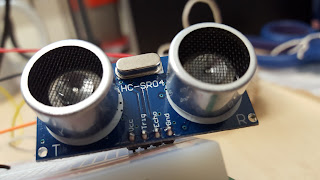It's been quite a "bitty" week, this week. Lots of odds and ends. One-off lectures, installing the new version of FATKAT, reviewing a paper, giving feedback on a thesis, PhD supervision meetings, editting one of my own papers, signing off paperwork for a commercialisation bid, submitting exam and coursework marks... you get the picture.
But if I've been reminded of the importance of NOT having an open door policy. Open door policies sound great - just drop in, whenever! In practice they are non-committal. I was out of the office for various stretches each day, so if you were dropping by in the hope I'd be in, then you were probably out of luck. And then there's the problem that even when I am in the office, I'm doing things. One or two people dropping by is doable: but when people say "Do you have five minutes?" it's never just five minutes. And it breaks your flow. That "five minutes" probably costs you at least fifteen, in practice. And if you do this for three or four students, that's an hour of lost prep or marking, which means that someone else loses out down the line in the form of delayed feedback, or hurried marking. Few students would thank you for skimping on their work to spend time on another students. And if you do it for three or four students, where do you draw the line? Can you do it for thirty or a hundred students? Of course not - so where do you draw the line? If you'll do it for the first student who drops by, how do you say no to the twentieth?
The best solution I've found is office hours: to have fixed times when you're available, and insist students see you then. That way, you know when you'll be Interrupted, and students know when you're around.
The exception that I make is for pastoral care. Sometimes you do get a tutee who turns up to discuss the fact that there's a family crisis and they're ill and... you get the picture. For that, there's always time.
Anyway, on a lighter note, I had the pleasure of examining a thesis on Monday with David Franklin from the Computer-Based Learning lab at Cambridge (though he's soon to be of Munich, as of early next month!). Here at Leeds, we're big fans of the CBL group, so it was great to have a chance to get his perspective on the work we do. A good viva is a double pleasure: an interesting thesis to discuss, and getting to meet researchers with whom you might otherwise not cross paths.
Anyway: more of the same next week (except the viva), ticking the small items from my To Do list!



